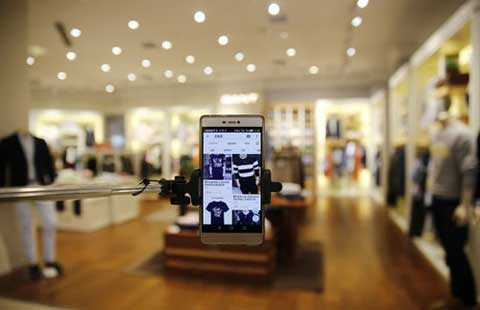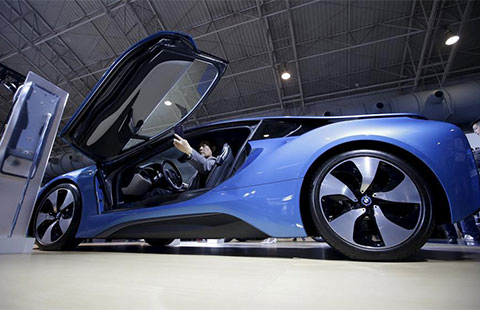Mixed message of global advertising
By Steven W. Lewis (China Daily) Updated: 2012-09-07 08:43

Chinese and Western Public Service ads only effective locally
Tens of millions of Chinese and tens of millions of Americans descend into the bowels of the earth each day to ride subway trains. On their journey to and from work they will stream like massive schools of fish past large, glowing postings of advertisements attached to the walls of stairways and connecting corridors, and across the tracks from the platforms.
At any given moment today there are likely more than 500 different individual commercial and public service advertising messages in the subway stations of Beijing, New York, Shanghai and Washington, repeated ad infinitum throughout miles of tiled corridors.
What would happen if these millions of commuters in the great political capitals and financial cities of the US and China were to suddenly stop in their tracks and fix their gaze upon the glittering, beckoning subway advertisements that call out to them like the sirens that imperiled Ulysses?
What would they see, and what would they then feel compelled to do? How would American and Chinese societies react if their peoples suddenly paid attention to the commercial and public advertisements in the public spaces of their cities?
The researchers of the Transnational China Project of the Baker Institute for Public Policy at Rice University in Houston can answer this question.
Surveys of advertisements collected from subways in Chinese and American cities over the past decade show remarkable similarities in both the types of commercial advertisements and public service advertisements.
However, the same surveys reveal clear and hidden dangers for both societies and global society in general. We certainly would not benefit from every Chinese and every American suddenly stopping and blindly following the advertisements that surround them.
What is the danger hidden in these advertisements?
Most of the advertisements in the subways of Beijing, New York, Shanghai and Washington are seemingly harmless commercial ones. In 2010 in Beijing, Shanghai and New York, between 13 and 19 percent of all advertising messages in the subways were ads for cosmetics and fashion.
In contrast, these goods made up only about 3 percent of the ads in Washington. The US capital, however, easily kept pace with Shanghai and New York in the proportion of ad messages directing commuters to see movies, watch plays, listen to music and visit museums and amusement parks, with between 23 and 25 percent of ads for these activities.
All four cities had significant numbers of commercial ads hawking food and beverages (about 7 to 10 percent), and about equal numbers of ads for media and information technology - iPhones, iPads, cell phones, computers. There were also many fewer ad messages for financial services, education, healthcare, insurance, transport and personal services in all cities.
Remarkably, although US incomes are much higher than average Chinese incomes, the types and range of commercial goods and services were very similar in the subway advertisements. If we were to take the commercial advertisements from US subways and switch them with Chinese advertisements, most Americans would only be surprised to see so many Chinese language characters spread in among the otherwise recognizable English commercial messages. Chinese citizens might not even notice the absence of Chinese characters in their ads, so used they have become to seeing English ads.
So far so good. If all Americans and Chinese suddenly started doing what their subway ads instructed them to do, they would likely keep doing mainly what they have been doing for many years: shopping, shopping, some eating, and then a little bit more shopping. Even the public service ads in US and Chinese subways are remarkably similar.
Research shows that about 10 percent of all advertising postings in public spaces in both China and the US are intended to be reserved for public service advertisements (PSAs). Beijing, New York, Shanghai and Washington all had distinctly political or patriotic ads in 2010. A Shanghai ad asked people to remember that women "hold up half off the sky", and a New York ad reminded its people that they lived in a multicultural metropolis, requiring all residents to exercise tolerance and understanding toward people from different backgrounds and beliefs.
And then there were many ads asking Beijingers to preserve endangered species, New Yorkers to plant trees, Shanghainese to conserve electricity and water, and Washingtonians to drive more energy efficient vehicles. Finally, all subway systems directed commuters to keep an eagle eye out for thieves, terrorists and suspicious packages.
Despite the overheated nationalism heard shrilly in US and Chinese media, subway PSAs were universally peaceful and good-natured in their portrayals of other societies. In more than 14 years of traveling throughout these subway systems, I have not seen a single "China sucks!" or "Kill America!" commercial public service ad in these subways. Harsh words and profanity are reserved for graffiti, and we seem to be one big happy planet of shoppers.
And yet here is where the danger lies. Many commercial ads show people from the other side of the globe urging commuters to buy cars, iPads, credit card services, insurance, luxury watches, designer luggage and expensive international tours.
Foreigners are everywhere in the commercial ads in both US and Chinese cities. Many depict Westerners who seem to be living and working in Chinese cities, and Asians who seem to be working and living in US cities.
There are also many ads that can only be designed to appeal to globe-trotting Chinese and Americans. An ad for a Swiss watch shows a young Chinese woman at a wedding in some vaguely European pastoral setting. A Toyota Corolla ad juxtaposes middle-class drivers in front of the landmark skylines of Sydney, Paris, New York and Shanghai's Pudong financial district.
In other words, both Chinese and US cities have many commercial ads asking their commuters to become distinctly transnational middle-class consumers. Think globally, shop locally is the message.
The danger here is that such advertisements may be creating schizophrenic global citizenship. More Chinese and US middle-class commuters are being persuaded to consume more like those on the other side of the planet, and yet at the same time public service ads merely ask Chinese and Americans to conserve and manage scarce resources as local residents and as national citizens.
We have billions of dollars of commercial advertising telling us to shop like everybody else around the planet, and yet virtually no public service advertisements telling us to conserve like global citizens.
At the very least, we need PSAs that present global problems - such as overuse of antibiotics, pollution, extinction of species and destruction of precious resources - as more than mere local issues. How can Americans and Chinese come to work together to solve these problems that affect everyone unless they begin to conceive each other as people who can work together to solve them?
PSAs are a critical first step. It is unlikely that Americans or Chinese will moderate consumption and be responsible global citizens if they think the other side will never moderate their consumption.
Fortunately for both societies, there are strong regulations and norms governing PSAs in public spaces in our cities.
Clearly the next step is for Chinese and US government leaders to begin discussions on how we can share PSAs in our cities and begin to create the public idea of working together to solve shared global problems. We cannot just shop together; we have to save together as well.
The author is C.V. Starr Transnational China Fellow at the James A. Baker III Institute for Public Policy, Rice University. The views do not necessarily reflect those of China Daily.
(China Daily 09/07/2012 page8)
- China outbound M&A beats 2015 record with 6 months to spare
- Fosun-owned Club Med to open Hokkaido resort in 2017
- Dutch giant bullish on dairy in China
- Wal-Mart to sell its China e-commerce operation to JD.com
- Parkson to shift its focus to lower-tier cities
- 'Big Bang' to Brexit: The City of London fears end of golden age
- CIMC ENRIC to use Internet Plus solutions to sustain growth
- More western filmmakers tend to seek Chinese partners


















